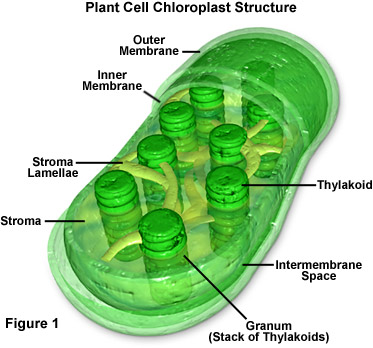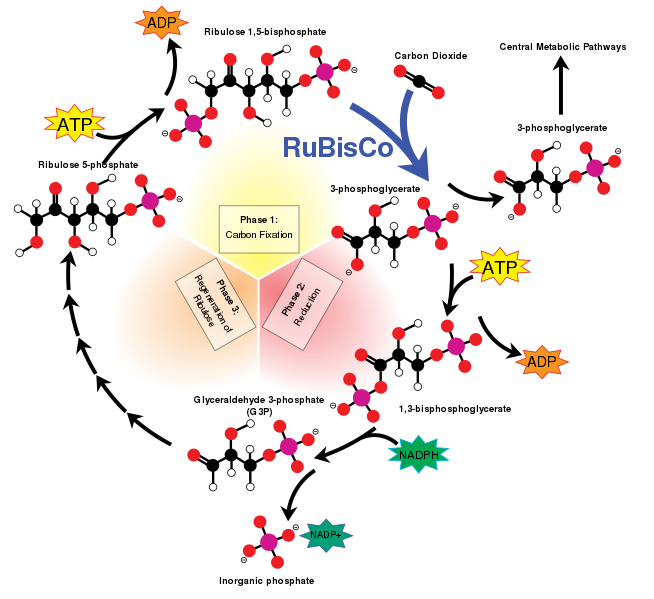I was going to make a detailed post on the formation of kidneys (mostly to make the joke “Zac Efron the Nephron”) but I found the subject to dry and uninteresting. However photosynthesis and cellular respiration is a much more interesting subject in my opinion. In a way it is the basis of all life.
Photosynthesis is the process by which plants (and certain other organisms) store solar energy in carbohydrate molecules: 6CO2 + 6H2O + photons => C6H12O6 + 6O2. This is how most new energy enters the food chain. This reaction takes place in the chloroplast. Photosynthesis is split into light dependent and light independent reactions.
That internal structure is called the thylakoid. The light dependent reaction takes place right at the membrane of the thylakoid. Basically, this reaction takes sunlight and uses it to attach a phosphate to ADP to create ATP (the energy “currancy” of the cell) and hydrogen to NADP+. The molecules hold the energy in these bonds. For a summary of the light dependent reaction, see below.
The light independent reaction (aka the Calvin Cycle) occurs outside the thylakoid in the lumen of the chloroplast. It basically uses the ATP and NADPH created in the light dependent reaction to take CO2 and create carbohydrates.
Cellular respiration is kind of the opposite of photosynthesis. Carbohydrates break down and release energy: C6H12O6 + 6O2 => 6CO2 + 6H2O + energy. The main method of cellular respiration is aerobic respiration. A lot of biological reactions operate as a cascade of small reactions, and aerobic respiration is just such a reaction. See below for a summary:
Glycolysis is a 2 phase reaction takes glucose and creates 2 pyruvates.
The pyruvates are then converted to Acetyl coenzyme A.
The citric acid cycle converts Acetyl coenzyme A to coenzyme A. This creates 2 ATP.
Electron transport generates a whopping 32 to 34 ATP!
Anaerobic respiration (fermentation) requires less oxygen, but releases less energy. Glycolysis runs and releases 2 ATP, but pyruvate is converted to lactic acid or alcohol depending on the organism instead of continuing on through respiration.
Now, you’re asking, what about all the other stuff we eat, how do we get energy from that. Well they enter at different parts of the pathway. See below.









No comments:
Post a Comment